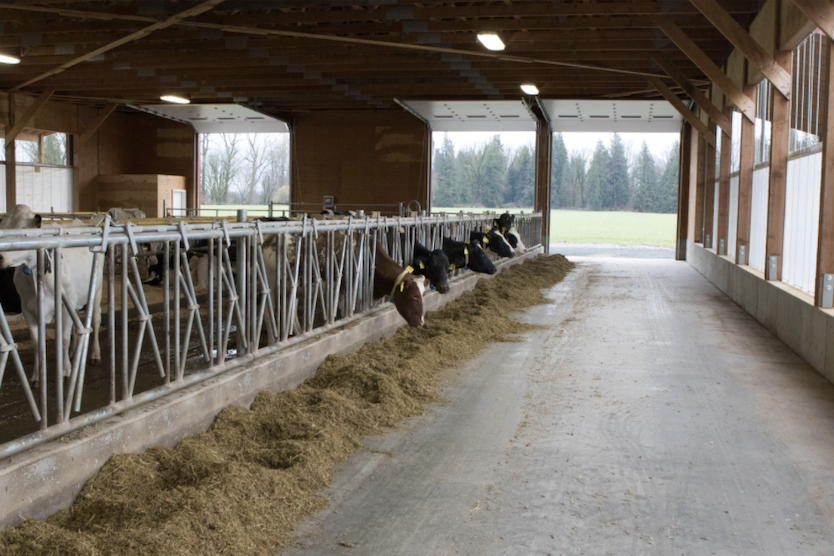Preparing for a visit from a proAction validator can be a daunting task, especially if you are new to dairy farming in Canada or if you have not devoted enough time to integrating proAction requirements into your routine. Phil Chris, a veterinarian with Greenbelt Veterinary Services in Chilliwack, British Columbia, says a good way to approach proAction is to first understand the requirements and how your farm meets them. “That’s the best way to start, to say, ‘OK, here are your required SOPs; let’s do them all,’” he says. Chris and the Greenbelt clinic work with their clients to establish 15 standard operating procedures (SOPs) and advise them on keeping 18 individual records.
“It gives us an opportunity to really review what’s happening on the farm and seeing what changes we might want to make,” says Lisa McCrea, veterinarian and co-owner of Agwest Veterinary Group Ltd., located in Abbotsford, British Columbia. McCrea says thinking of proAction and its SOPs as a tool is a valuable way to stay on track for your proAction validation and to continue to reap the benefits of the process.
Dave Dykshorn, a veterinarian at the Abbotsford Veterinary Clinic in the same town as McCrea, says he and the other veterinarians at his clinic customize proAction preparations to each farm. “They are built in a way that goes above and beyond the requirements of proAction to ensure our farmers adhere to all regulation while producing wholesome, safe food for our community,” he says.
Chris, McCrea and Dykshorn describe a few ways farms can improve the proAction process from start to finish, along with a few things to avoid.
DO review SOPs and records at least once a year
Before an upcoming validation, a review of SOPs should be done to ensure nothing has changed over the past year that would need to be reflected in your farm’s SOPs.
Records required by the proAction validation process should be updated daily when applicable; this is often done through herd management software. It is important to ensure the correct information is being recorded in a timely manner.
Chris says veterinarians help provide four of the 18 records required, including the biosecurity questionnaire, cattle health declaration, current medication list and veterinary prescriptions. “These are the ones that directly involve us veterinarians; we can do our part to make sure you have it,” Chris says. McCrea notes it may also be valuable to review some records monthly or bi-monthly to properly address disease instances and bottlenecks.
DON'T begin preparing for validation at the last minute
“This isn’t something [producers] should be doing last-minute. This is meant to be something that’s useful for them on their farm, not just another regulatory measure that they need to jump through,” says McCrea. She adds preparation for proAction validation should be an ongoing element of farm operation that is used and improved upon throughout the year. Chris says if changes need to be made to SOPs before a validation, multiple meetings may be required to facilitate these changes. Thus, you should account for this when deciding when to begin reviewing and preparing for validation.
DO make periodic changes to SOPs as regulations, farming practices and barn design or technology changes occur
Citing an example of a recent change to dehorning regulations, Chris says farmers and their veterinarians should update SOPs as regulations change to ensure proper protocols are being followed. Chris says Greenbelt assists with this by reviewing their clients’ records and seeing which ones need to adjust their SOPs to accommodate new regulations. Additionally, McCrea says as farming practices change, or barns switch from a parlour to a robotic milking system, SOPs will again need to be modified to account for those changes.
DON'T make SOPs that do not accurately reflect actions taken on your farm
“The mistake that producers will make is they will put [an action] down on their SOP when it’s not actually what’s being done on their farm,” McCrea says. Chris notes this has become increasingly problematic for farms. He says validators initially wanted to see that protocols have been established but, as farms have become more familiar with proAction, validators have begun asking farmers to describe the steps they perform during an operation detailed by an SOP. If your steps and SOPs do not match, you may struggle with the validation process or even face repercussions, Chris says.
DO rely on others
Both McCrea and Chris work for veterinary clinics who work closely with a number of producers to review and maintain the requirements of proAction on those farms. However, there are other players you may want to involve in your proAction planning. “Robot reps or herd software people (if they don’t have robots) have the ability to help the farmer get out the records that are required,” Chris says. He says producers should not be afraid to lean on each other to get through any proAction-related difficulties. McCrea and Dykshorn add that if any issues arise while developing or reviewing protocols, you may want to reach out to your hoof trimmer or nutritionist to address those issues as they are brought to the surface.
DO stay organized
“Have a binder. A lot of the information is not going to be kept in paper in the binder, but you should at least write under each record the pathway that you need to access it,” Chris says. This will allow you to quickly and easily supply the necessary records to the validator, he says.
Dykshorn says maintaining “calf cards” is a good way to organize data and records on calves that can then be used in management decisions. “[Some] farms have capabilities to post ‘calf cards’ on each individual calf suite or hutch and record individual treatments, vaccinations or other events, keeping the cards as records even after the calves move on. We work with calf raisers and their employees to build these cards specific to their calf-raising needs … These have helped us get better buy-in to the calf treatment SOPs and provides us with invaluable data to review,” Dykshorn says.
DON'T panic
Chris says that although most producers should feel like they have a better understanding of proAction at this stage, issues may still arise during validation. He says this should not be a cause for panic, as a 30-day period is given to rectify any concerns raised by the validator.
DON'T think of proAction as just another regulatory mandate
“This is a program that is developed by the farmers, for the farmers,” McCrea says. “The positive side of proAction is that this is an opportunity for farmers to create a catch-all place for employees,” she says. “I think it’s important that the different employees are involved in making those protocols and are aware of what those protocols are.” McCrea says she thinks proAction can serve as a way to train new employees and make sure everyone is on the same page, while also creating employee “buy-in.”
Dykshorn also sees the value in proAction as going beyond the requirements to be validated. “Promoting effective record-keeping for the farm and for proAction compliance is great, but even more-so, analyzing this data for farm profitability and animal welfare optimization is something we strive for,” he says.
DO review or create non-proAction-required protocols at the same time
“A lot of the stuff we are starting to do more of is not only doing the protocols required by proAction but also talking about generic treatment protocols,” Chris says. He adds that it is good to make sure cows are being treated properly for each disease they may encounter, as proAction does not require protocols for specific diseases. However, Chris says they are a good thing to put in place while working through proAction protocols.
DON'T stop here
Chris says these guidelines only represent some of the steps needed to prepare for your farm’s proAction validation. Be careful, he warns, “It’s a lot more involved than this.”









